The History of Crash Test Dummies — Volunteers, Dead People and Pigs
Categories: Auto | History | Science
By Pictolic https://pictolic.com/article/the-history-of-crash-test-dummies-volunteers-dead-people-and-pigs.htmlAs you know, a car is a source of increased danger. The first victim of a car accident is considered to be an Irish woman scientist Mary Ward. In 1869, she decided to take a ride with her nephews in a homemade steam car. On a sharp turn, the woman fell out of the cart right under the wheels and instantly died. So a huge account of accident victims was opened.
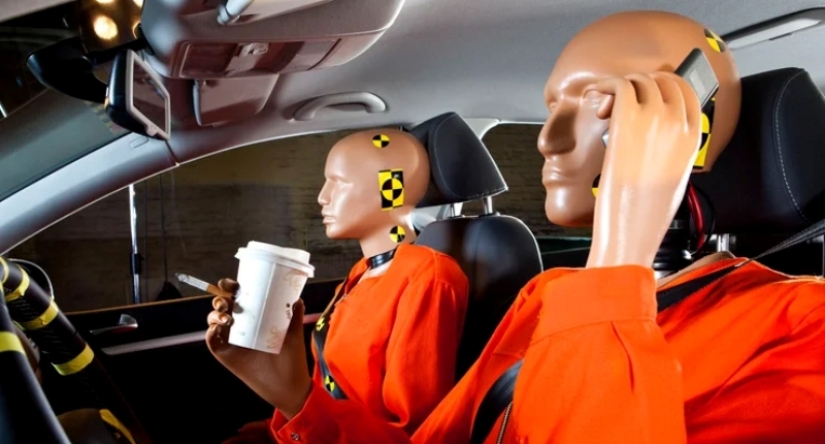
People die in car accidents every day, and manufacturers are trying to reduce this bill. Each model of equipment, before entering the market, passes a crash test. Nowadays, people in these rigged accidents are replaced by special mannequins, but this was not always the case.
When cars first appeared, no one really thought about their safety. Accidents with machinery were rare, and their victims were considered dead at work. This is not surprising, since due to the small number of such equipment, the inventors themselves suffered from it. By the end of the 19th century, a person had a higher chance of dying in a stagecoach crash or falling out of the saddle than crashing in a car accident.
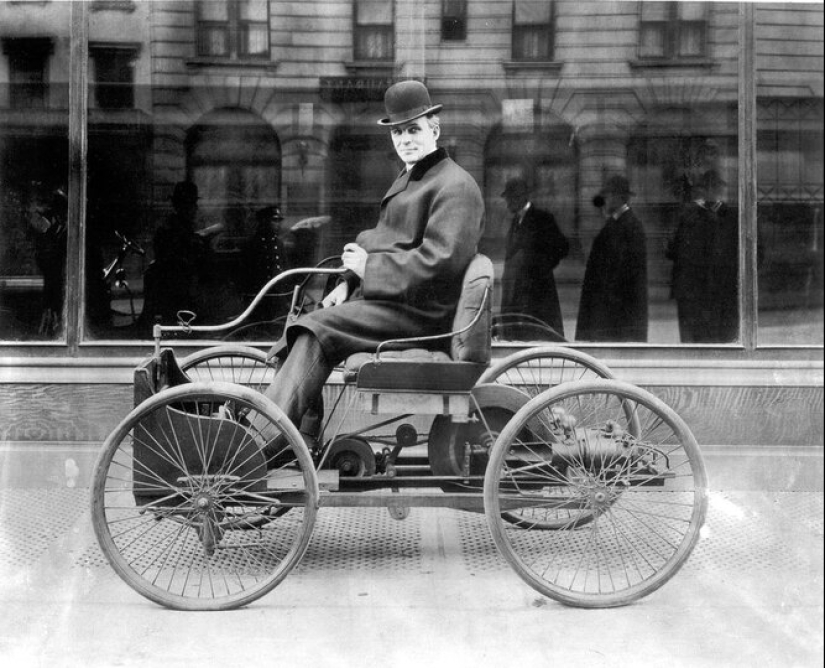
But after 1890, everything changed. There were more and more cars, and more and more obituaries appeared in the press mentioning accidents. At the turn of the century, when several companies produced cars in series, they began to think seriously about safety. And by the beginning of the 30s, statistics appeared: 15.6 dead people per 100 million miles, that is, for the mileage of all cars produced at that time in the world.
It was in the 1930s that car manufacturers began to think about improving the safety of their products. Cars of that time were as dangerous as possible for the driver and passengers during a collision or overturning. They had a metal dashboard, a rigid steering column and many protruding solid elements in the cabin: knobs, switches, levers and other things.
To investigate how a car behaves in an accident, General Motors conducted the first crash tests in 1934. Mannequins have not yet been planted in cars of the American brand — cars were simply smashed against a concrete wall. After the experiment, the designers carefully studied what was left and drew conclusions about safety. At the same time, the approach to the question was erroneous. It was believed that the stronger the car, the safer it was. In some cases, for non-critical strikes, volunteers were involved, who were properly equipped. But this method did not catch on.
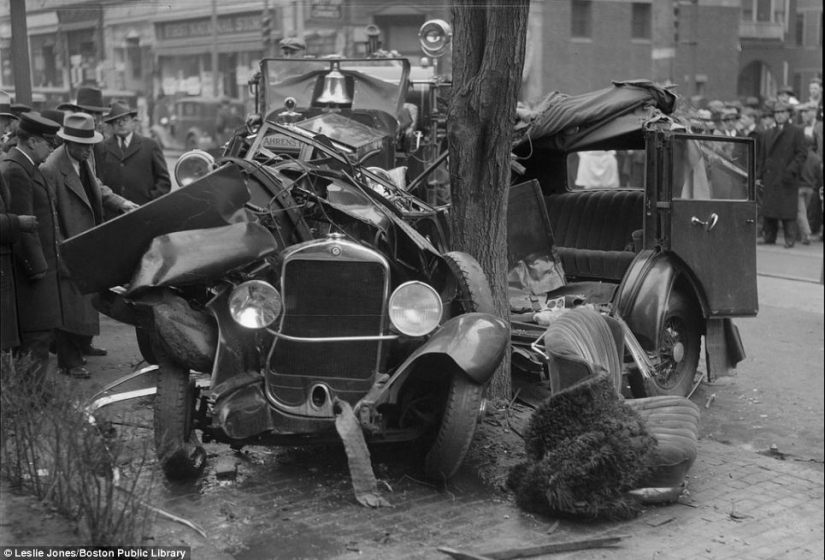
The mistake was realized after the first dummies were used in crash tests. It became clear that the car body should not withstand the impact, but extinguish it. This is achieved using crumpled zones. Additionally, GM discovered that the steering wheel, levers and pedals should be arranged so as not to injure people on impact.
The first mannequins were plastic. They gave a very vague picture of collision damage, as they were very different from human ones. Therefore, in the late 30s, corpses began to be used in crash tests. It seemed that the bodies of the deceased were ideal for studying. They could even get fractures, dislocations and injuries of internal organs! Until the end of the 40s, everything was fine with everyone, and the corpses silently endured the most unheard-of tortures.
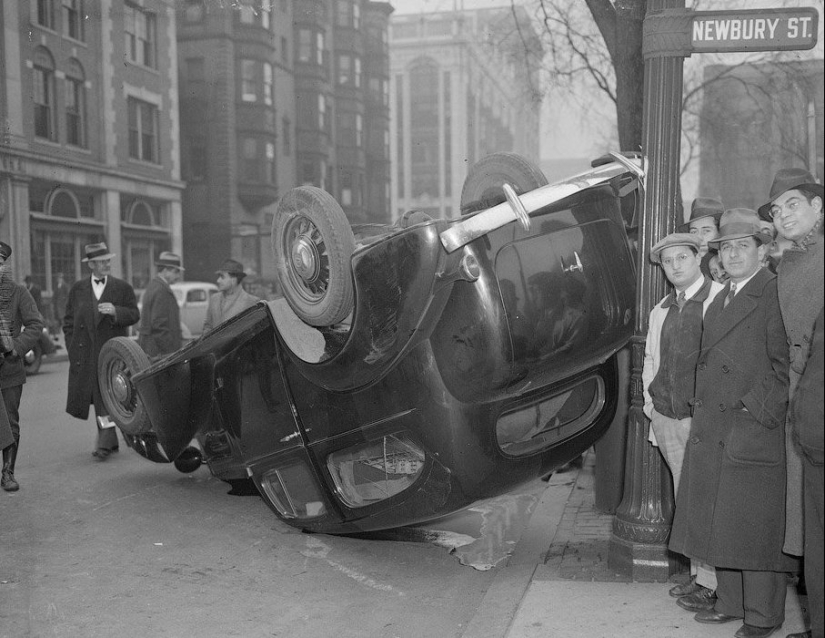
But in the early 50s, the automotive industry made another breakthrough. Cars began to produce more, competition has increased, which means that safety requirements have also risen. Then it became clear that a dead body is not the best inventory for crash tests. Firstly, the bodies of people who died of natural causes and bequeathed their bodies to science were used in the tests. In most cases, they were old people.
But for an accurate study, it was necessary to know what would happen when faced with children, teenagers and people of different complexions. Secondly, the bodies were "disposable" and they were sorely lacking. Very few at that time were prepared for the fact that after death they would be smashed against concrete blocks and oncoming trucks. Therefore, in the late 50s, live pigs began to be used as mannequins.
The animals were given anesthesia, put them in chairs and arranged accidents. The internal structure of these animals is very similar to human, so the injuries were very similar. This experience made it possible to make a serious leap forward in protecting drivers and passengers in case of an accident.
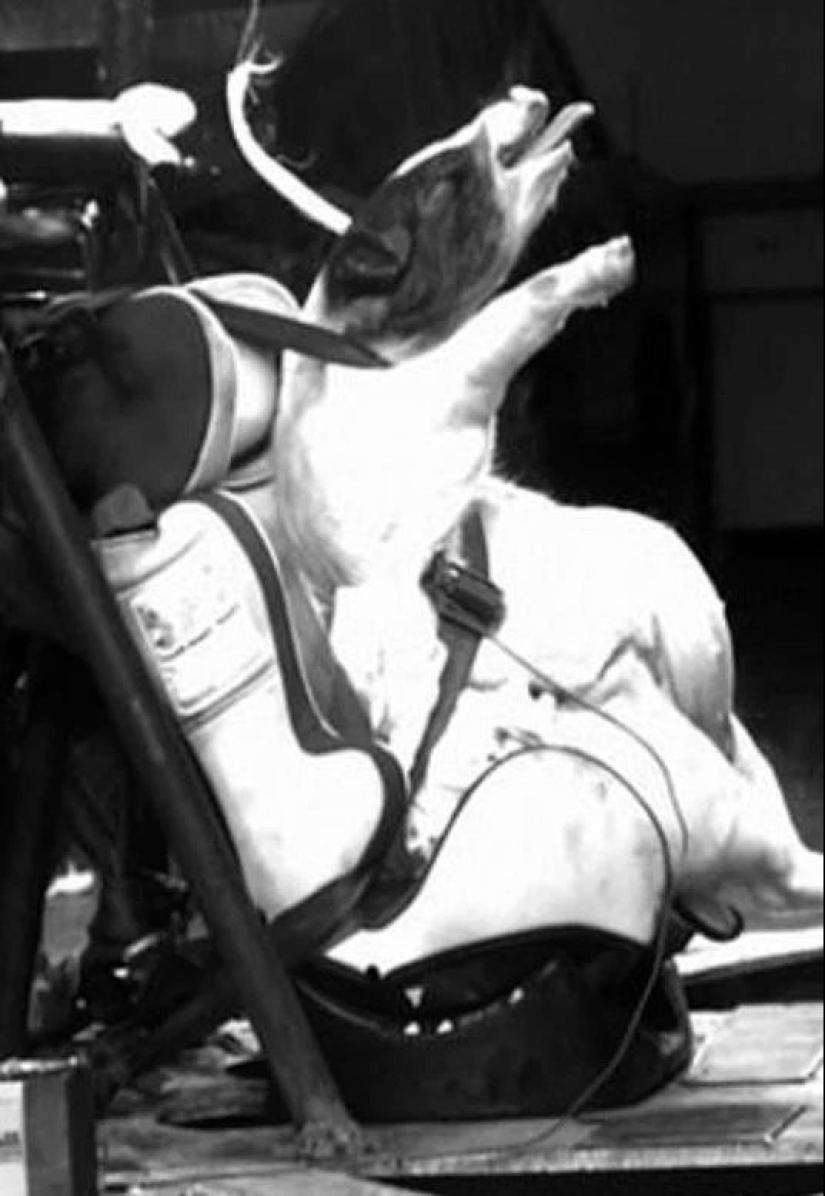
It was in the era of the "participation" of pigs in crash tests that folding steering columns, injury-proof front panels, internal rear-view mirrors that do not cause injuries in an accident were developed. Manufacturers were happy with everything, motorists too. But there were also those who did not like the idea of animals participating in deadly trials.
If the use of corpses caused protests among religious organizations, then in the case of pigs, ASPCA activists, the Society for the Protection of Animals, began to be outraged. These conscious citizens have spoiled a lot of nerves for car manufacturers. Soon the era of pigs in crash tests was over. Moreover, this did not happen at all because of the actions of animal rights activists. Once again, it turned out that the tests lack information content. The pigs stopped satisfying the engineers' requests.
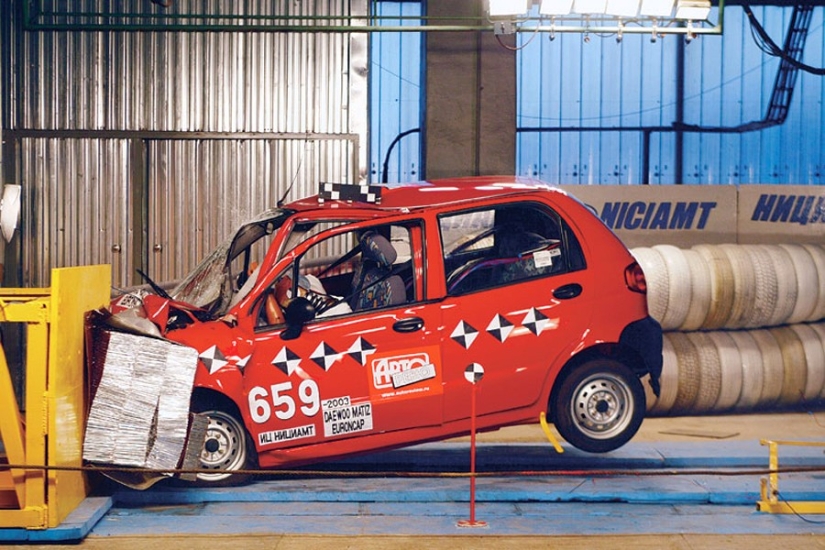
At the dawn of the 70s in the United States, several companies began to develop special crash test dummies. These were products that exactly repeat the features of human anatomy and have the weight of a human. The first product that appeared on the test equipment market was called Hybrid. As it often happens, the first pancake turned out to be a lump and the dummy was considered useless.
Therefore, immediately after the first model, a second one appeared — Hybrid II. It was 1972 and at that time it was a real miracle of human thought. The mannequin had a flexible spine, had movable joints, including such complex ones as shoulder joints. This generation of mannequins was met favorably and they were allowed to crash tests.
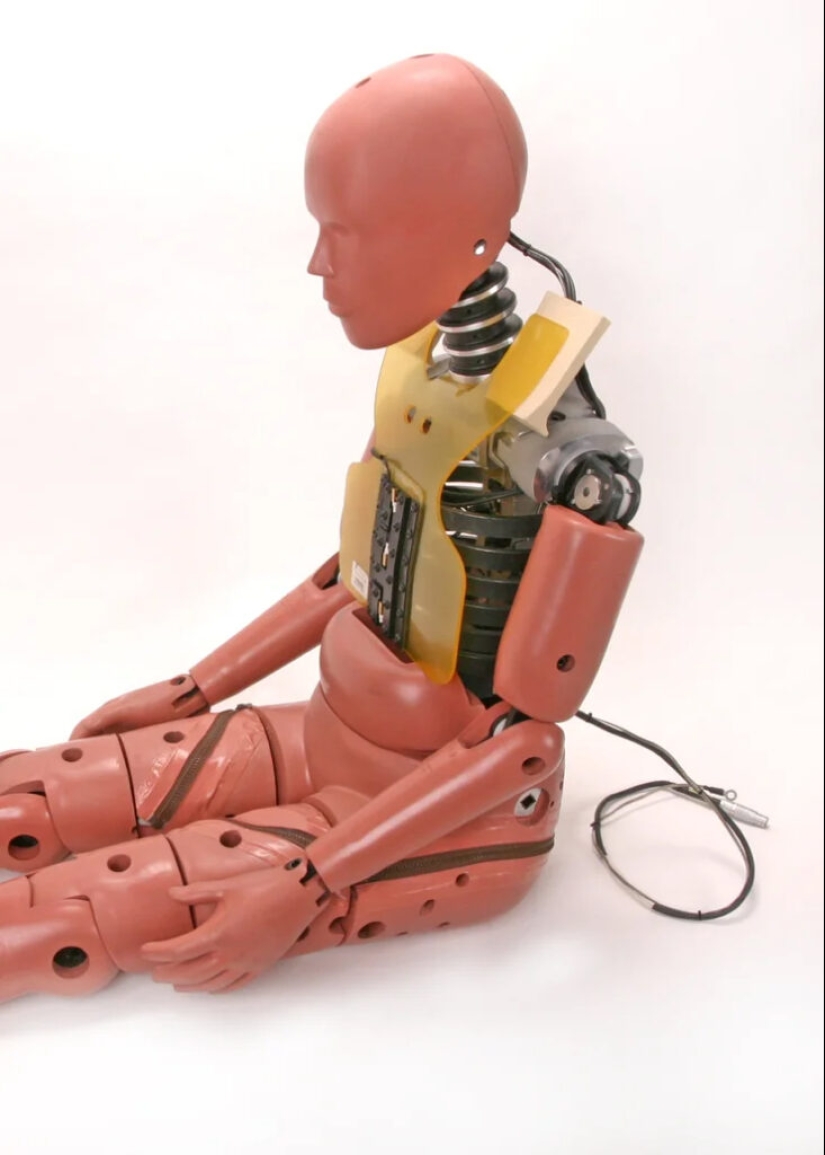
Despite this, some companies used the bodies of humans and pigs in the old-fashioned way. Also, engineers went to the accident sites and studied the dead and injured at the scene, drawing conclusions from this. In short, there was complete anarchy in the field of crash tests. In 1973, all this was put to an end.
The National Highway Traffic Safety Association of the USA (NHTSA) adopted the crash test rules common to all, in which it approved the Hybrid II dummy. Only after that, the concerns left the dead alone and stopped bullying pigs. Although there were exceptions. It is known for sure that the last pig crashed behind the wheel of a Chevrolet in 1993. And outside the United States, for example, in China, crash tests involving animals are still carried out.
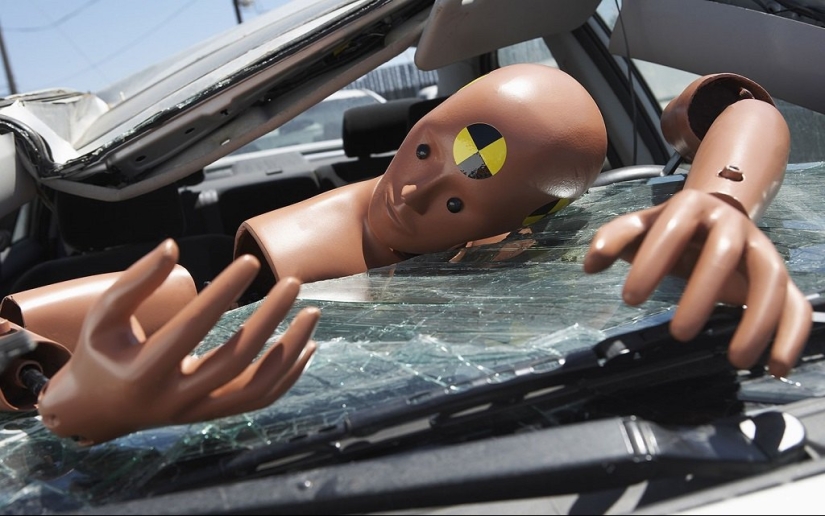
Until 1976, crash tests studied only emergency injuries of adults. But soon the Hybrid III appeared. It was no longer a mannequin, but a family of mannequins. First, three types of figures were released: 175 cm tall and weighing 77 kg, 188 cm tall and weighing 100 kg, and 152 cm tall and weighing 50 kg. Later, there was a replenishment in the mannequin family. A 21-kilogram mannequin was made, which was similar to a child of about 7 years old, and a 15-kilogram one depicting a 3-year-old child.
In the late 90s, even pet dummies and special ones for studying children's car seats began to be produced. Modern mannequins are very complex objects. They not only mimic the human body down to the structure of the skeleton, but are also densely packed with all kinds of sensors.
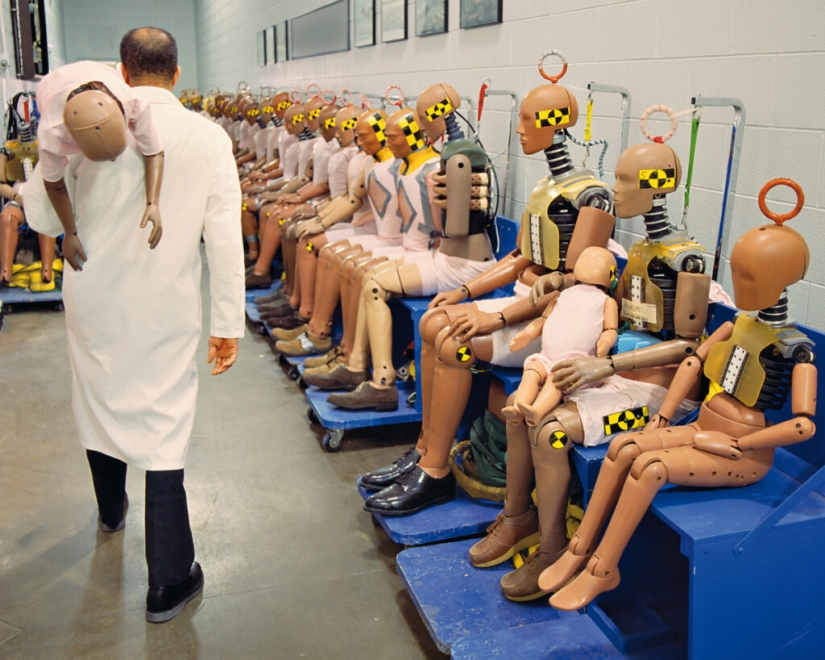
They are made to order, while the price per piece starts from 100 thousand dollars (6.1 million rubles). There are also more expensive ones, for example, one of the most valuable mannequins cost one of the companies 400 thousand dollars (24.6 million rubles). Since the sums for these silent guys are being asked are impressive, it is customary not to throw them away after the crash test, but to repair them. To do this, replace individual damaged nodes, which are purchased separately.
Recent articles

You may not know what hate-following is, but if you actively use social networks, you may have encountered this phenomenon. This ...

The artist Andrew Tarusova (who was born in Rybinsk, but now lives in Los Angeles) — their own vision of pop culture. He ...

American pin-up model, actress and film producer Eve Meyer, was one of the brightest beauties of the 1950s. She shone on the covers ...